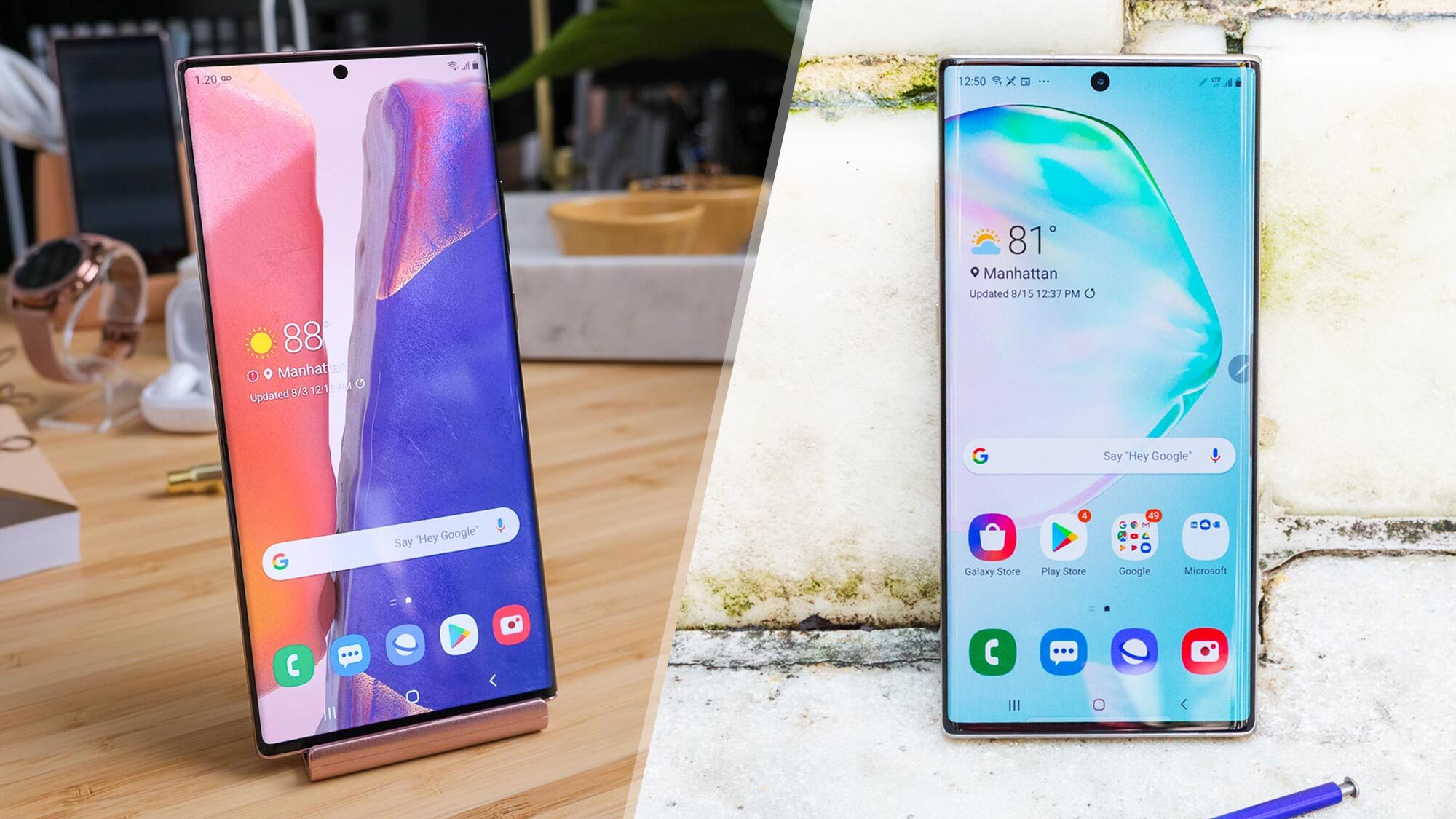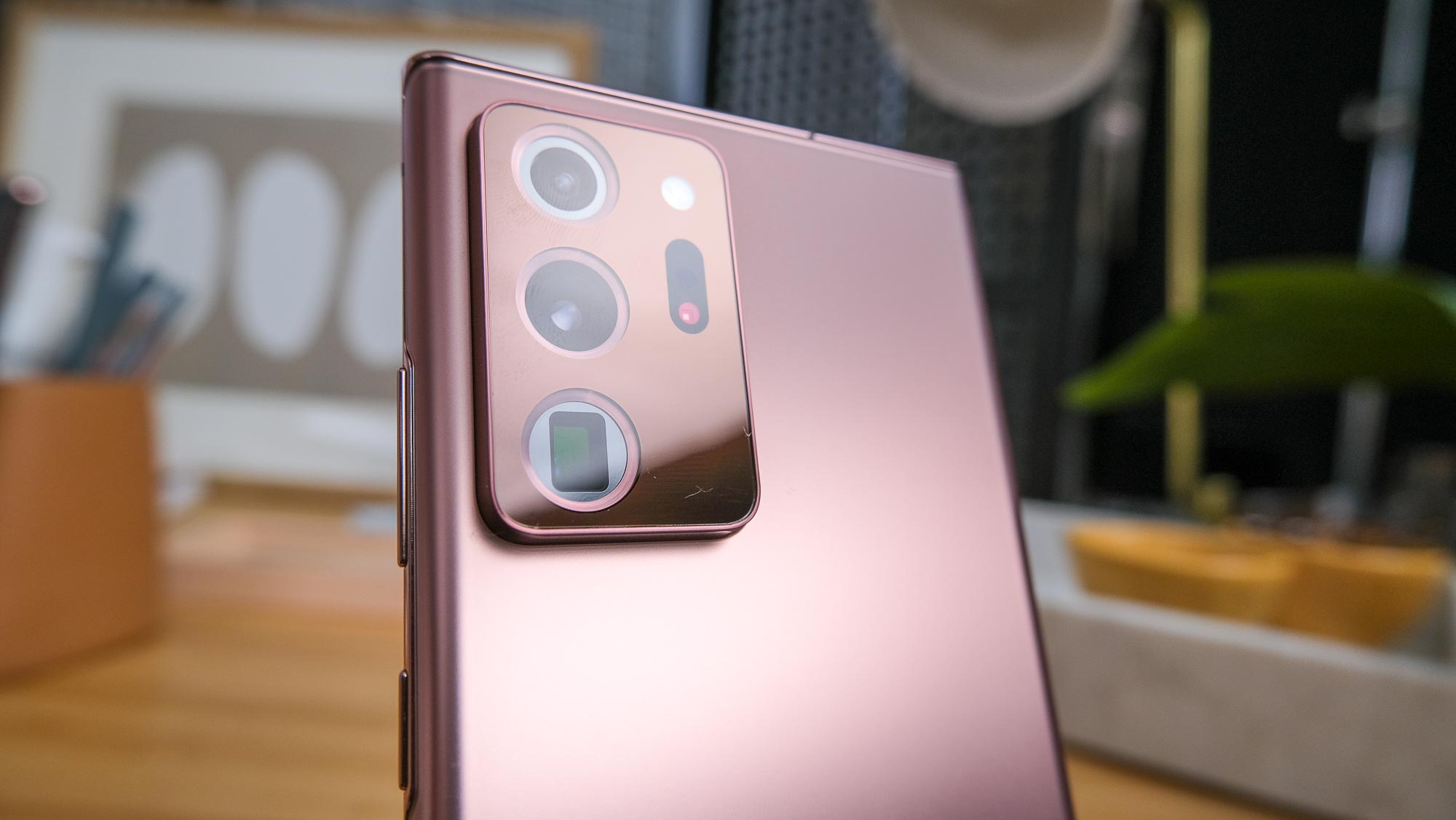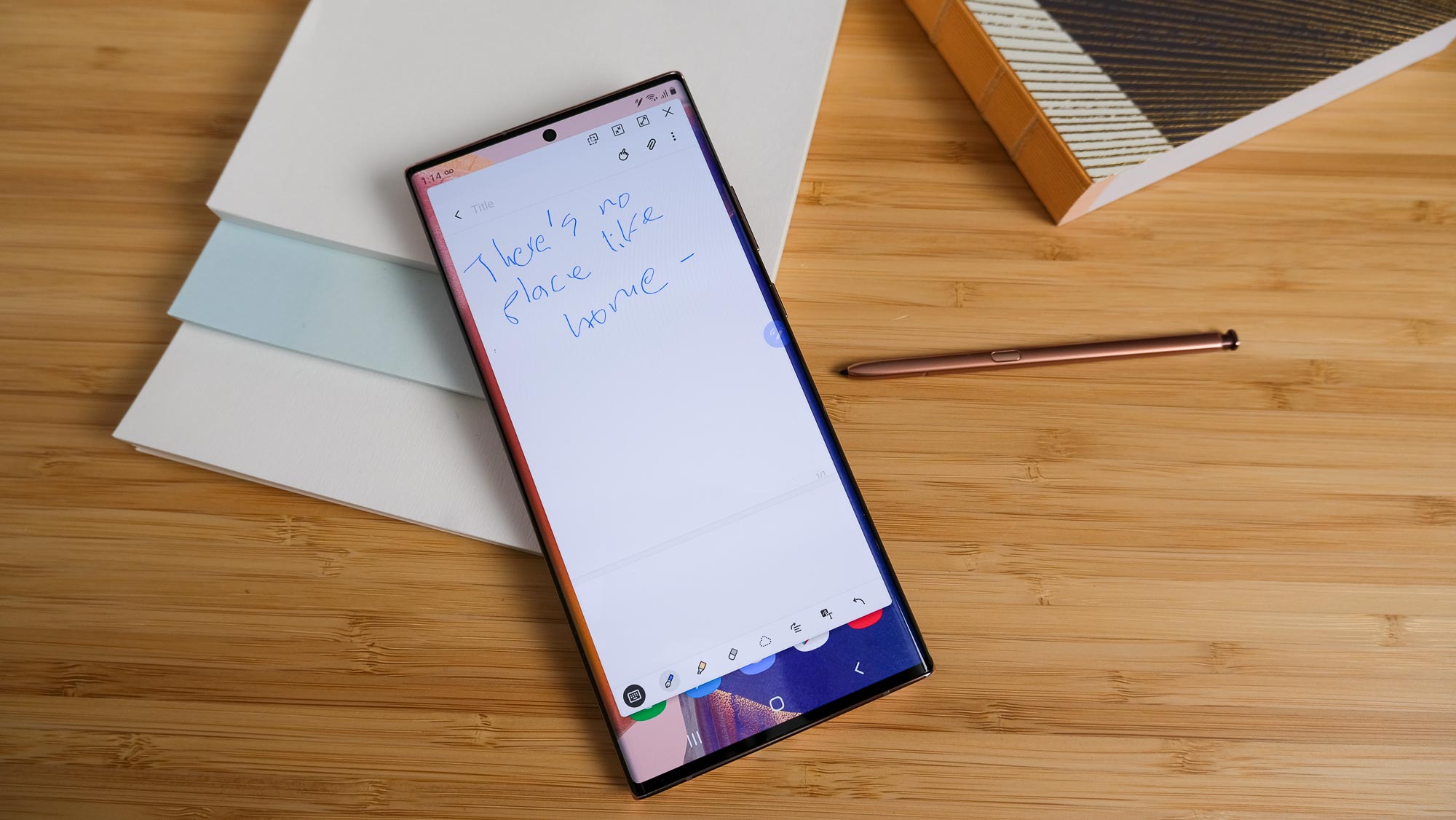Samsung Galaxy Note 20 Ultra vs. Galaxy Note 10 Plus: What's different?
The Galaxy Note 20 Ultra is an impressive phone, but has it improved on the Note 10 Plus?

The Galaxy Note series has always followed a "Go big or go home" philosophy, and that's very much on display with the Samsung Galaxy Note 20 Ultra. The new Note has one of the largest screens you'll ever find on any phone — at least on one that doesn't fold open — along with the most powerful processor available to an Android device. You'll also get multiple cameras and an upgraded S Pen with less latency than ever before.
In fact, the Note 20 Ultra introduces so many changes, you might wonder if it's a completely different device from the Galaxy Note 10 Plus that used to be Samsung's best big phone. While the new model still has a lot in common with last year's super-sized phone, much has changed since the Note 10 Plus made its debut a year ago.
- Samsung Galaxy Note 20 Ultra review: Is it worth $1,300?
- The best Samsung phones right now
- Plus: Galaxy Note 20 Ultra vs iPhone 11 Pro Max: Camera shootout
This Galaxy Note 20 Ultra vs. Galaxy Note 10 Plus face-off considers all the changes Samsung has introduced to its phablet lineup, as we determine how big an upgrade the Note 20 Ultra is over its predecessor — and whether it's worth it to make the jump to the new model.
Galaxy Note 20 Ultra vs. Galaxy Note 10 Plus specs
| Row 0 - Cell 0 | Galaxy Note 20 Ultra | Galaxy Note 10 Plus |
| Starting price | $1,299 | $1,099 |
| Screen size (Resolution) | 6.9-inch AMOLED (3088x1440; 120Hz) | 6.8-inch AMOLED (3040x1440) |
| CPU | Snapdragon 865 Plus | Snapdragon 855 |
| RAM | 12GB | 12GB |
| Storage | 128GB, 512GB | 256GB, 512GB |
| Rear cameras | 108MP wide (ƒ/1.8); 12MP telephoto with 5x optical zoom (ƒ/3.0); 12MP ultra wide (ƒ/2.2) | 16-MP ultra-wide (ƒ/2.2); 12-MP wide angle (ƒ/1.5-f/2.4); 12-MP telephoto (ƒ/2.1); time-of-flight VGA |
| Front cameras | 10MP (ƒ/2.2) | 10-MP (ƒ/2.2) |
| Battery size | 4,500 mAh | 4,300 mAh |
| Battery life (Hrs:Mins) | 10:26 | 10:47 |
| Size | 6.48 x 3.04 x 0.32 inches | 6.4 x 3.0 x .31 inches |
| Weight | 7.33 ounces | 6.9 ounces |
| Colors | Mystic Bronze, Mystic Black, Mystic White | Aura Glow, Aura White, Aura Black, Aura Blue |
Galaxy Note 20 Ultra vs. Galaxy Note 10 Plus price and availability
One area in which the Galaxy Note 20 Ultra has surpassed its predecessor is in terms of cost. The Galaxy Note 10 Plus debuted at $1,099 last year. Prices haven't fallen that much in the ensuing 12 months, though you'd expect that to change once the Galaxy Note 20 Ultra starts shipping August 21, and retailers look to clear out their stock of older phablets.
If you thought $1,099 was a lot to pay for a phone, get a load of the Galaxy Note 20 Ultra's $1,299 price tag. That's for the 128GB model, as opting for 512GB of storage raises your cost to $1,449. Order the phone through Samsung and you can get up to $650 off the cost of the Note 20 Ultra when you trade in an older phone. The Note 10 Plus commands the highest rebate, if your year-old phablet is still in good condition.
Galaxy Note 20 Ultra vs. Galaxy Note 10 Plus design
You need to break out the calipers to determine much difference in the size of the Galaxy Note 20 Ultra vs. the Galaxy Note 10 Plus. The Note 20 Ultra is taller and wider, but only slightly, and the Note 10 Plus is thicker, but by an even smaller margin. Pick up the phones and you might notice the Note 20 Ultra weighs a touch more at 7.33 ounces to the Note 10 Plus' 6.9-ounce weight.

Flip over the phones, and you'll see a big design difference. The Note 10 Plus camera array is pretty minimal, with its lenses descending down the left side of the phone. For the Note 20 Ultra, Samsung went with a more prominent square array that's hard to look away from. It's the one area where the Note 20 Ultra might be a step back from its predecessor.
Sign up to get the BEST of Tom's Guide direct to your inbox.
Get instant access to breaking news, the hottest reviews, great deals and helpful tips.

You'll also have less dynamic color options with the new phone, as the Aura Glow option on the Note 10 Plus was a real eye-catcher. The Note 20 Ultra's Mystic Bronze, Mystic Black and Mystic White options are not nearly as mystical as their names might have you believe.
Still, the Note 20 Ultra looks a bit more sophisticated overall, thanks to its squared-off edges and the way the gleaming, mirrored metallic frame plays off against the matte back. It's also more durable, as the first phone to incorporate Corning's Gorilla Glass Victus technology, which the glass manufacturer says is two-times more resistant to scratches than the Gorilla Glass 6 incorporated on the Note 10 Plus.
Once again, the Note 20 Ultra is rated IP68 water resistant, just like many Samsung flagships before it, including its predecessor. That translates to 1.5 meters of submersion for a maximum of 30 minutes.
Galaxy Note 20 Ultra vs. Galaxy Note 10 Plus display
The AMOLED panel on the Galaxy Note 20 Ultra is slightly larger than the one on the Note 10 Plus, with a 6.9-inch screen replacing the 6.8-inch display on last year's phone. But that's not the real story here.

Instead, the most noteworthy thing about the Galaxy Note 20 Ultra is its use of a dynamic 120Hz refresh rate. That means the Note 20 Ultra can adjust how quickly it refreshes depending on what you're using the phone to do. If you're scrolling or playing a compatible game, the Note 20 Ultra will max out the refresh rate; when you're engaged in more static activities, that refresh rate will scale all the way down to 10Hz if you're looking at still images.

The Note 10 Plus just doesn't compare to that feature, as it's got a 60Hz refresh rate — typical of most smartphones, really. That said, HDR10+ support and Quad HD+ resolution means that the Note 10 Plus' display is still sharp and colorful, even if it's not as immersive as what the Galaxy Note 20 Ultra offers.
The Note 20 Ultra's panel is more physically responsive as well, because it reacts to S Pen actions with just 9ms latency, compared to 40ms latency on the previous generation Note.
Responsiveness is, indeed, the main advantage of the Note 20's screen technology; in all other metrics these devices compare quite favorably where their displays are concerned. They get about equally bright (662 nits for the Note 20 Ultra versus 686 nits on the Note 10 Plus) and can render a similar gamut of colors (124% of the sRGB space in Natural mode for the Note 20 Ultra, versus 125% on the Note 10 Plus). Gamers and artists, however, will certainly gravitate toward the newer model for its far smoother animations.
Galaxy Note 20 Ultra vs. Galaxy Note 10 Plus cameras
Samsung shuffled up the cameras it used on its different Galaxy Notes, scrapping a time-of-flight sensor on this year's model but opting for more megapixels and a more powerful zoom. The results yield sharper photos with the Galaxy Note 20 Ultra, particularly when you're zooming in on a subject.

Specifically, the Galaxy Note 20 Ultra adopts the 108-megapixel main camera that Samsung first introduced with the Galaxy S20 Ultra. To help alleviate some of the focus issues users experienced with that earlier phone, Samsung added a laser autofocus sensor, which replaces the time-of-flight sensor found on last year's Note 10 Plus. The main camera on that older Galaxy Note topped out at 12MP.
As for the other rear cameras, the Galaxy Note 20 Ultra features a 12MP ultra wide shooter and 12MP telephoto lens, compared with 16MP and 12MP ultra wide and telephoto shooters on the Note 10 Plus. The difference in telephoto lenses is stark, though. With the Galaxy Note 10 Plus, you could only enjoy a 2x optical zoom. The Galaxy Note 20 Ultra increases that to 5x and, with the help of digital zoom, can get up to 50x. (Photos can get a little fuzzy at that point; we'd suggest stopping at 20x with the Galaxy Note 20 Ultra.)
Up front, there's no change in selfie cams with both Galaxy Note models turning to 10MP shooters with apertures of f/2.2.




The result is one of the best camera phones you can buy today. The above gallery of shots, all captured with the Note 20 Ultra, illustrate the incredible detail and versatility possible with such an intricate array of sensors. Samsung's Live Focus mode has also been greatly enhanced with its latest-generation imaging hardware and software, finally delivering shallow depth-of-field portraits on a par with that from the latest iPhones and Pixels. What's more, the addition of 5x optical zoom with 10x lossless power certainly makes the Note 20 Ultra infinitely more useful than its predecessor when working from a distance.
Galaxy Note 20 Ultra vs. Galaxy Note 10 Plus performance
A new year brings a new mobile processor to top-of-the-line Android phones, and that's the case with the Note 20 Ultra. But instead of upgrading from the Snapdragon 855 found in the Galaxy Note 10 Plus with this year's Snapdragon 865 chipset, the Galaxy Note 20 Ultra uses the Snapdragon 865 Plus. That's a variant of the 865 which features a faster core clock speed on the chipset's CPU along with faster graphics rendering.

You'd expect the Note 20 Ultra to outperform the Note 10 Plus, and outperform it does. In our Adobe Rush real-world test, where a video clip is transcoded from 4K to 1080p, the Note 20 Ultra finished the task in 1 minute and 16 seconds to the Note 10 Plus' 1 minute and 34 seconds.
In terms of benchmarks, the Note 20 Ultra's Geekbench 5 multicore score of 3,294 far exceeds the Note 10 Plus' 2,704-point result. And in the GFXBench Aztec Ruins test for high-tier handsets, the Note 20 Ultra's 1,455 frames proved a big improvement over the Note 10 Plus' 1,059 frames.
However, the Note 10 Plus actually comes with more on-board storage in its base model — 256GB to the Note 20 Ultra's 128GB — with both phones also offering a 512GB option and microSD card slots to expand storage even further. Samsung packed both phones with 12GB of RAM.
By default, the Galaxy Note 20 Ultra comes with 5G connectivity, thanks to Qualcomm's X55 modem, which is capable of working on all types of 5G networks. To get 5G with a Note 10 phone, you would have had to buy the $1,299 Note 10 Plus 5G.
Galaxy Note 20 Ultra vs. Galaxy Note 10 Plus battery life and charging
A bigger screen requires a bigger battery, and that's what Samsung has gone with for the Galaxy Note 20 Ultra. The new phone features a 4,500 mAh power pack, a bump up from the 4,300 mAh battery inside the Note 10 Plus. That battery helped last year's Samsung phone hold out for 10 hours and 47 minutes on our battery test, which involves continuous web surfing over LTE until a phone runs out of power. That result is better than the average smartphone, though the Note 10 Plus fell short of landing on our list of the best phone battery life, where you need to go at least 11 hours before you need a charge.

Does Note 20 Ultra outperform its predecessor? Not quite, though it doesn't lose by much, with a runtime of 10 hours and 26 minutes in our test while the phone's display was capped at 60Hz. That dropped to 7 hours and 59 minutes at full 120Hz mode.
It's unclear exactly why the Note 20 Ultra's longevity pales in comparison to the Note 10 Plus,' despite having a larger battery. The addition of 5G connectivity could hamper efficiency, though it's hard to pin down on one cause.
The Galaxy Note 10 Plus shipped with a 25W charger, which returns with the Galaxy Note 20 Ultra. It gets the Note 20 Ultra to 56% in 30 minutes. You can also charge both the Note 10 Plus and Note 20 Ultra wirelessly, or wirelessly recharge other devices, like a pair of Galaxy Buds in their case, using the phones' Wireless PowerShare feature.
Galaxy Note 20 Ultra vs. Galaxy Note 10 Plus S Pen and other features
The S Pen remains one of the marquee features for the Galaxy Note lineup, though you won't find many new features added to the Galaxy Note 20 Ultra vs. the Galaxy Note 10 Plus. Instead, Samsung chose to build on the Air Actions it introduced with the Galaxy Note 10 models, adding new gesture based controls you can use with the phone's stylus.
The biggest change you'll notice is in the performance of the S Pen, as the Note 20 Ultra version features a reduced latency of 9ms — making for a much more responsive stylus than before. The Note 20 Ultra also features an updated Note app with live syncing and the ability to match written notes with voice recordings.

Like the Galaxy Note 10 Plus, the Galaxy Note 20 Ultra supports Samsung's DeX mode, where you can use your phone like a portable PC if there's a monitor nearby. The Note 10 Plus required either a dock or a cable to go into DeX mode — the Note 20 Ultra doesn't need either, as it can support the feature wireless with any Miracast-compatible TV or monitor.

The Note 20 Ultra ships with Android 10 and Samsung's One UI 2.0 interface. The Note 10 Plus has upgraded to Android 10 after initially shipping with Android 9. We wouldn't expect an Android 11 update to be available for either phone until the end of 2020.
Galaxy Note 20 Ultra vs. Galaxy Note 10 Plus verdict
You'd expect a phone that's a year newer to be at least a year better than its predecessor. After evaluating the Galaxy Note 20 Ultra, it's clear to see Samsung's new premium phablet easily surpasses the Note 10 Plus in a number of critical ways, and is worth the added expense if you're choosing between picking up the new model or saving a few hundred on last year's edition.
The cameras on the Note 20 Ultra are more powerful, with massively-improved sensors and more versatile zoom for the telephoto. The souped-up Snapdragon 865 Plus silicon handles demanding games and apps effortlessly, and DeX Mode is easier than ever to use, thanks to wireless support via Miracast. And, of course, the better performance and responsiveness of the S Pen is sure to please the Note faithful.
However, the real difference-maker is the faster refreshing display on the Galaxy Note 20 Ultra, which makes for an experience that is not only visually dazzling, but makes navigating the phone feel so much snappier in general and especially comes in handy while gaming.
The Galaxy Note 10 Plus is still a powerful phone, and unless you plan on taking advantage of a generous trade-in offer to mitigate the cost of upgrading, it would be hard to justify spending $1,299 on a new phone when your old Note still performs well. Still, if you want 5G connectivity, better overall performance and — most significantly — that more immersive display, the Galaxy Note 20 Ultra is the Samsung phablet to get.
Philip Michaels is a Managing Editor at Tom's Guide. He's been covering personal technology since 1999 and was in the building when Steve Jobs showed off the iPhone for the first time. He's been evaluating smartphones since that first iPhone debuted in 2007, and he's been following phone carriers and smartphone plans since 2015. He has strong opinions about Apple, the Oakland Athletics, old movies and proper butchery techniques. Follow him at @PhilipMichaels.
-
Fifth313ment Tons hardware use to be a site for real tech news and now you are being paid by Samsung it seems. There are so many falsehoods in this article. As for the Samsung Note 20 Ultra, it's a scam. Stick with the Note 10+ if you want to get a new phone and save half a grand. 45 watt charging is gone on the S20 ultra, your article is like Samsung hasn't said. Ugh, yes they have and it's gone from the Note 20 Ultra. And that is huge as it charges your phone two times faster!Reply
Note 20 ultra 120Hz is running at 1080p and not QHD+ (3k) like the Note 10+. To me that is a huge difference. You didn't mention that, you simply say it's running in the higher resolution, which it's not. It would be like playing video games in 480p vs 1080p just to add smoothness. And many reviewers are saying with 120Hz on, the battery drops significantly, which makes sense as Samsung won't let you run QHD (3k) with 120Hz even though the panel is capable of it. Think about that, Samsung is disabling a hardware feature, that should tell you something about how bad this feature will drain your battery (and that is with only 1080p). So I'm losing picture quality and battery life for a smoother experience, no thank you.
And why did Samsung lower the storage to 128GB? You also didn't put any emphasis on that and that is also huge! You are paying $200 more than the original price of the Note 10+ but they lowered the storage space from 256GB to 128GB and removed a 256GB option altogether! The next jump us 512GB and costs an extra $200 bringing the astronomical total to $1500! This 256GB storage on the Note 10 and plus models was a huge selling point last year with them saying Notebook storage on a phone.
I also don't need 5G. 5G isn't tuned well and it's going to use way more battery than the decade tuned 4G LTE. And speed isn't an issue (not for a few years of longer yet). I'm able to clock my Note 10+ at 250Mbps down and 60Mbps up on T-Mobile. Anything over 100Mbps isn't going to really be noticable. And 5G is a battery sucker as most areas don't have 5G and your phone is going to be searching forever for 5G that isn't there. 5G will be awesome but in like 3 years when it's more places and the carriers upgrade their backhaul as right now 5G usually gets you fast 4G LTE speeds.
So the cameras are going to be better but is it worth another $600-800 depending on which model and if you trade in your 10+? Reviewers were saying the Note10+ camera was better than the S20 Ultra in most shot types due to issues with the 100x zoom and autofocus. And what about that camera bump that looks like you are sporting a whole other phone on the back of the Note 20 ultra?
To me the Note 20 Ultra is a dud and not worthy of an upgrade just yet. The Note 9 to 10 was a large jump. But if you put a 10+ next to the 20 Ultra at first glance you would be hard pressed to differentiate the two.
I forgot to mention that Samsung has now expanded updates to 3 Android updates instead of their old policy of two. They also said it will be retroactive starting with the S10. So the Note 10+ will be getting two more Android updates to at least Android 12 and Android 13 for the S20 Ultra. That is huge! It's another reason why I'll hold onto my Note 10+ for longer! Many tomshardware is a joke.

